Track 1: Introduction
Entrance to the Thain Forest
Script:
Welcome to the New York Botanical Garden’s self-guided Forest Bathing walk. In this session we are going to explore the Thain Family Forest, New York City’s largest expanse of uncut old-growth forest. This walk takes roughly one hour from beginning to end. You can also choose to do a shorter 20-minute session and conclude at the Hester Bridge or enjoy the full experience which ends with a walk through the Cherry Collection.
Forest Bathing, known as Shinrin-Yoku in Japan, is a practice of connecting with the forest. In Japanese, “shinrin” means forest, and “yoku” means bath. There are many ways to practice Shinrin-Yoku, and our journey today will focus on slowing down and experiencing the sensory connections that help calm the mind and deepen reflection under a glorious forest canopy. We invite you to walk slowly and be fully present as you bathe your senses in the sights, smells, sounds, and sensations of the Thain Family Forest.
Let’s begin. First, find a space to stand comfortably along the side of the path within the forest, away from other visitors. Here, we will set an intention for this practice. An “intention” is a creative and positive thought to come back to whenever your mind begins to wander. An intention can be a word, a color, or even a sentence. By setting an intention we build a bridge to carry elements of our Forest Bathing session into our everyday lives. For example, my own personal intention is to feel more calm. Take a few moments, but don’t overthink it. *Pause*
Now that you have your intention, let us begin to settle into nature. Think about the start of your experience the same way you might want to stretch before you exercise, or when you wake up in the morning before you start your day. Move your body by reaching for the sky or moving in any way that feels good to you. *Pause*
Now, plant your feet firmly on the ground in a comfortable position. Stand firmly yet comfortably, allowing your shoulders to move down your back—relax and close your eyes. Bring your attention to your body and begin to let go.
As you calm your body down and find stillness, begin to focus on your breath. Notice as the breath runs into your body and as it leaves your body, flowing out into the air around you. Notice now how your body feels supported by the earth below you and surrounded by the air. Allow your thoughts to rise and drift away with each breath. Begin a journey through your senses. *Slight Pause*
First, focus on your sense of hearing. Bring your attention to your ears, feeling whatever sensations are happening in this area. Notice the sounds around you. You might feel tingling sensations or heat, throbbing or even soft vibrations. There may be loud sounds, soft sounds, or you might not hear much at all. The specifics of what you hear are not important. All that matters is that you notice whatever sounds there are, hearing your own symphony. Try exaggerating the sounds of your own breathing so you can hear it, allowing for it to blend with the other sounds around you. What does it feel like to be part of the symphony of this forest? *Pause*
Now, let us turn to explore your sense of touch. Bring your attention to your hands and fingers, noticing any sensations that are there, any coolness or heat, any tingling or pressure. On your next exhale, wiggle or move your hands. Turn your palms to face forward, imagining your hands are sensors. Begin to feel the sensation of air moving around your hands. Does it feel warm or cool? Does the sensation change as you move your hands faster or slower? Notice the variety of sensations in your fingers. How do these textures feel? *Pause*
Finally, let’s move to our sense of smell. Breathing in through your nose, experience the scent of the air as it enters your nose. Notice if the air is cool or warm. What scents are being offered by the forest at this time of day? Move your head slowly from side to side and up and down. Do the scents of the forest change as you move? Stay with the position that offers the most pleasurable smell for a few more slow, deep breaths. *Pause*
Now slowly begin to open your eyes. Allow your eyes to adjust to the light and the colors that surround you. Lift your chin toward the sky, and gaze at the tree canopy that has sheltered you during this practice.
Congratulations on this introductory session. That was not too hard, was it? Continue on the path to the Orientation Point benches, where we will deepen our practice by focusing on what is in motion around us.

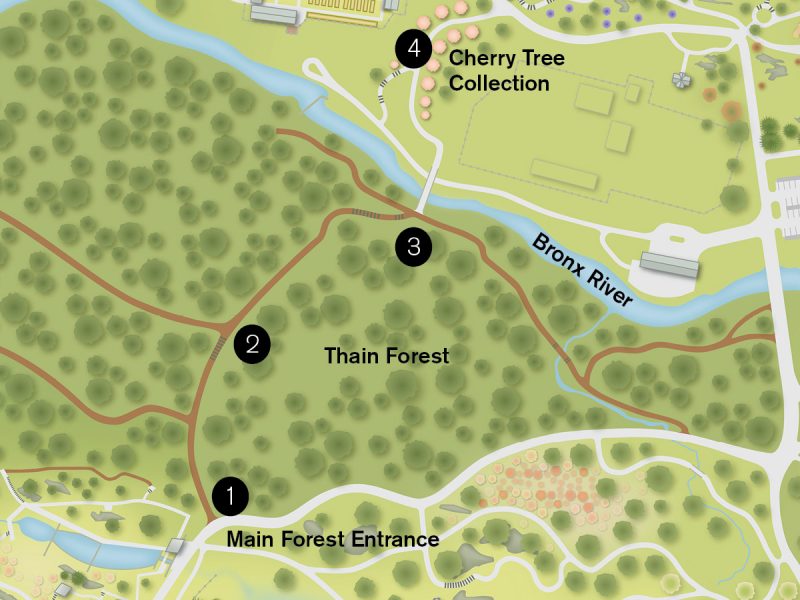
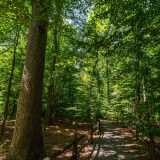
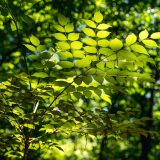
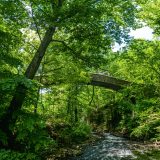
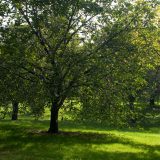
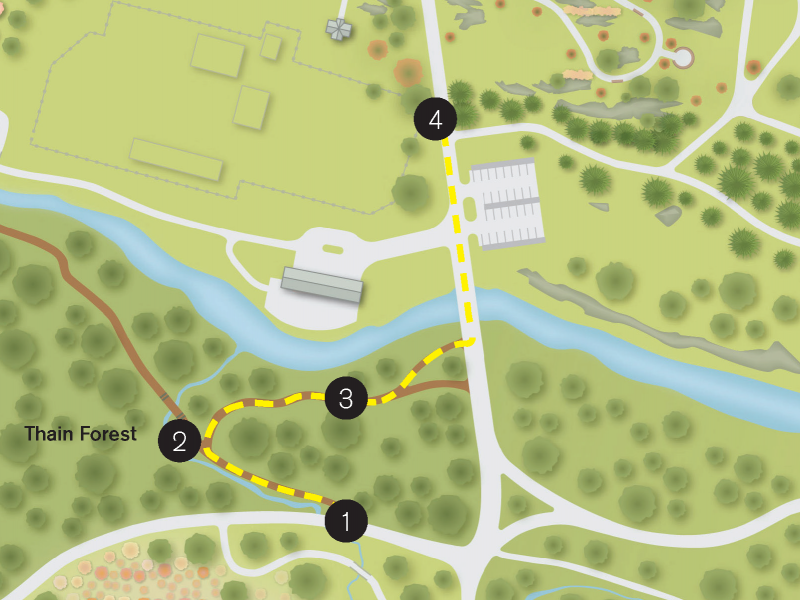
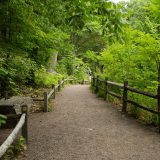
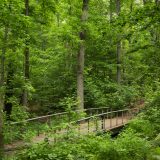
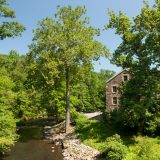
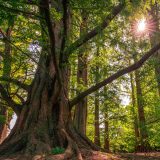

 Location Thain Family Forest
Location Thain Family Forest